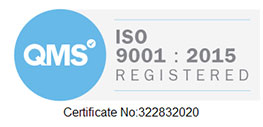Carrying out an earthing study is usually of key importance to any new installation project and is usually a mandatory requirement. It is important to recognise that while the phrase ‘earthing study’ may sound very specific it actually covers a very wide range of activities and issues, so it is essential to agree with any consultant or designer what scope is included in the earthing study.
First of all it is important to clarify the difference between an HV and an LV sites, I have therefore split the blog into two separate areas below:
LV Earthing Design
A key factor in the LV design, is selecting the type of neutral-earthing strategy for the plant, this is typically either TT, IT, TN-S, TN-C or TN-C-S – this is a complex area in its own right, and I will write another blog post on this subject… but for now, most UK sites are usually a mix of TN-S or TN-C-S – depending on how power is received. The use of IT and TT installation does occur in the UK, but it is usually restricted to specialist sites and locations.
Once the main earthing strategy has been set, the next stage of the LV design is to size the earthing conductor cables, route the earthing cables and conductors, to ensure that all exposed and conductive metalwork is bonded into the main earthing ring, locate the main earth bar and ensure that the general requirements of the earthing standards are met. It is interesting to note, that the minimum size for an earthing conductor is often set by the requirements of the LV fault current – as this is usually higher (in kA terms) than the HV network.
HV Earthing Design
HV earthing design, is much more complex than LV, and whilst the basics are the same – there is one important difference, which is that an HV site must be evaluated to determine the Earth Potential Rise (also known as Ground Potential Rise or Rise of Earth Potential). In simple terms, when an earth fault occurs on the HV network, the fault current must return to the source substation – which is usually a long distance away; the fault current will flow back to the source through a variety of routes – such as any directly connected earth cables, cable sheaths or overhead ground wires etc. If there are no metallic paths available all of the fault current will be injected into the ground by the earthing grid and flow through the mass of earth back to the source.
It is this fault current that is injected into the ground that is of most concern, as it is this that creates the Earth Potential Rise (EPR). The formula for calculating earth potential rise is actually very simple and is shown below:
EPR = Ief * Zgrid * Sf
Where Ief is the earth fault current, Zgrid is the impedance of the earthing system, and Sf is the scaling factor applied for the metallic return paths.
Ief is generally set by the utility company, and is therefore a fixed value. Zgrid is determined (either calculated by hand or by computer) by the amount of earthing conductor installed and the site soil conditions – sites with ‘good’ soil conditions and plenty of space for an earthing grid will generally achieve a good value of Zgrid, whilst sites on rocky ground, or with limited space may only achieve a poor value of Zgrid. As soil conditions vary significantly around the country, it is almost always necessary to carry out a soil resistivity survey at the soil using a suitable earth tester such as the Megger Det 2/2.
The scaling factor is the more tricky value to determine and can be anything from 0.01% up to 100%, depending on the type of return path. typically closely coupled substations, with dedicated copper earth conductor will be around 0.01%, sites fed through cable, where the sheaths are bonded at both ends will be around 10% to 40% depending on the cable / sheath types and sites connected via overhead line with no metallic return path will be 100%.
From simple deduction it can be seen that a substation closely coupled to the grid, that is supplied by cables will have a smaller EPR when compared to a rural substation fed via overhead lines where there is no metallic return paths and all of the fault current is injected onto the ground. If the EPR is too high, and above a certain threshold (either 430V / 650V or 1200V depending on which standard is used), the site is classed as ‘Hot’ and the HV and LV earths must be separated to stop an HV earth fault creating an excessive voltage on the LV system which could cause and insulation failure. Once a site has been determined as ‘Hot’, a lot more design work is required to confirm is the touch and step voltages around the site are acceptable, and how far the sites ‘Hot’ zone extends. If the EPR is below these thresholds then the site is ‘Cold’ and no further action is necessary.
A few general rules of thumb can therefore be extracted from this explanation:
- Sites in a rural location will often have a high EPR
- If a site is fed via cable, but has overhead line sections – it will still have a scaling factor of 100%, as there is a break in the metallic path – this often leads to a high EPR
- Sites in poor (rocky) soil conditions will have a poor (high) value of earth grid impedance – this often leads to a high EPR
- Sites with limited space to install an earth grid will often have a poor earth grid impedance – this often leads to a high EPR
- Sites located in town and city centres usually have many metallic return paths and are heavily interconnected – this usually leads to a low EPR
So in summary, if your site is located in a town, city or industrial area, the EPR should be low and the site will usually ‘cold’. If the site is in a rural area, or the ground is very stony it will often be ‘Hot’ and will require special design. The goal of an HV earthing study, is therefore to analyse the site conditions and system design to confirm if the site is ‘Hot’ or ‘Cold’ and take appropriate design measures – some Client’s can accept a ‘Hot’ site, whilst others must achieve a ‘Cold’ site for their design to be safe.
One last thing to consider is the relevant specification that must be followed. In the UK there are two main standards ENA 41-24 and BS En 50522. The ENA 41-24 standard is used by the DNOs and is somewhat dated – a new version is under production, but will probably not be ready for a few more years – the ENA standard for a ‘Hot’ site is where the EPR value is greater than 430V (slow protection) or 650V (fast protection). The BS En 50522 is more modern approach and can be used on private HV networks, and has more relaxed values for the classification of a site as ‘Hot’ and allows an EPR of up to 1200V, in addition the touch and step voltage limits are far more relaxed that those given in ENA 41-24.
Hopefully it can be seen from the above explanation, that an earthing study can be very man-hour intensive and require various soil resistivity surveys and computer modelling with the industry standard package CDEGS. Whilst this can be expensive, undertaking an earthing study early on, is strongly recommended, as it can avoid problems later. As you can probably tell, earthing is a complex subject with many things to consider and it is almost always worth talking to a specialist and getting an earthing study carried out if your site is in a difficult location. If you need any assistance with your project, please do not hesitate to get in touch and Aurora will be happy to assist!



